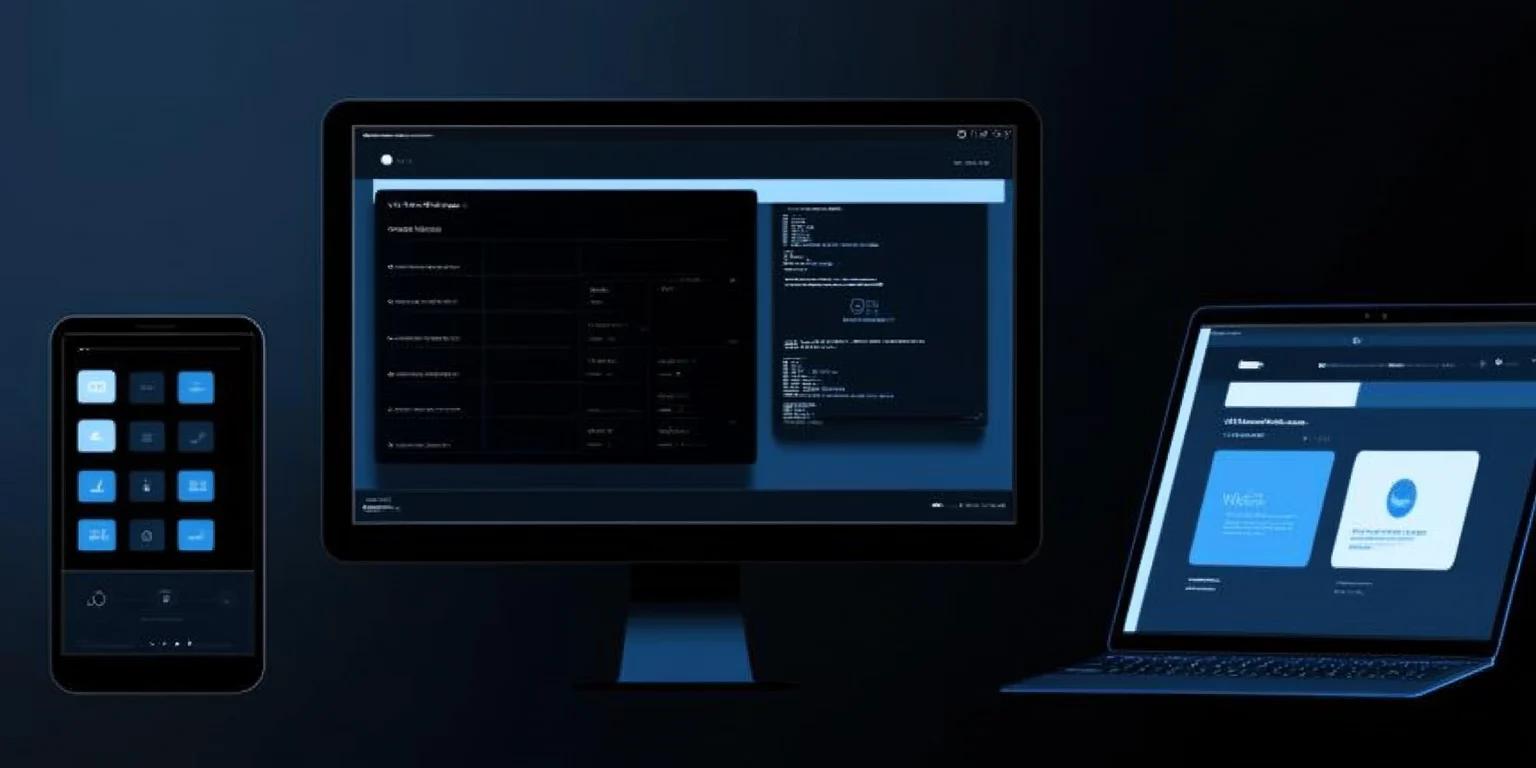In web design, using the best tools for website design collaboration is vital to unite your team's efforts and streamline your workflow. This guide presents the top collaboration platforms that can change how your team communicates and manages projects.
What are Collaboration Tools for Web Design Teams?
Collaboration tools for web design teams are software applications that help communication, project management, and joint design efforts, enabling teams to work together efficiently and produce high-quality websites.
The Importance of Collaboration in Web Design
In web design, collaboration is essential to bring together diverse skills and perspectives. Designers, developers, content creators, and project managers need to coordinate closely to ensure the final website meets both aesthetic and functional requirements. Effective collaboration simplifies workflows, reduces misunderstandings, and improves productivity. By using collaboration tools, you can improve communication, manage complex projects more effectively, and deliver websites that align with your goals.
Overview of Essential Tools
There are various types of collaboration tools that support different aspects of the web design process:
- Planning and Project Management Tools: Applications like Trello and Asana help organize tasks, set priorities, and track progress.
- Design and Prototyping Tools: Tools such as Figma and Adobe XD allow multiple designers to work on the same files simultaneously.
- Communication Tools: Platforms like Slack and Zoom facilitate quick and efficient communication among team members.
- Feedback and Approval Tools: Solutions like Filestage and GoVisually enable stakeholders to provide feedback and approve designs directly within the platform.
- Content Management Tools: Systems like Notion help you collaborate on website copy, content plans, and style guides, facilitating efficient content workflows.
By using these tools in your workflow, you can improve collaboration across all stages of your web design project, from initial brainstorming to final delivery.

Design and Prototyping Tools
Design and prototyping tools improve collaboration and efficiency in your web design projects.
1. Figma
Figma is a cloud-based tool that enables real-time collaboration on design files. Because multiple team members can work simultaneously, it is ideal for remote teams or projects requiring close coordination. It also supports design systems based on the atomic design methodology, allowing for consistent and scalable design components. It also offers Webflow integration capabilities, allowing for seamless transition from design to development. Key features include:
- Real-time collaboration: Teams can edit and comment on designs together, and changes update instantly.
- Design components and libraries: Maintain consistency with reusable components and shared libraries, supporting the atomic design methodology.
- Prototyping capabilities: Create interactive prototypes to simulate user experiences.
- Developer handoff tools: Make smooth transitions from design to development with accessible code snippets and specifications.
- Integrations: Connect with other tools to improve your workflow, including Webflow integration capabilities.
2. Sketch
Sketch supports collaboration between designers and developers with shareable components, facilitating modular web design practices. It's known for its user-friendly interface and powerful vector-editing tools. Features include:
- Component sharing: Reuse design elements across projects to maintain consistency, a key principle in modular web design.
- Plugins and integrations: Extend functionality and integrate with other apps to simplify your process.
- Collaboration tools: Share designs with team members and stakeholders for feedback and revisions.
Project Management and Communication Tools
Effective project management and clear communication are vital for web design teams to stay organized and meet deadlines. Implementing agile communication tools enhances team collaboration and adaptability.
3. Trello
Trello is a user-friendly project management tool that uses Kanban-style boards to help your team visualize tasks. With Trello, you can:
- Create boards for different projects
- Add cards for tasks under "To Do," "In Progress," and "Done" columns
- Assign tasks to team members
- Set deadlines and add checklists
The visual approach makes it easy to track progress and keep everyone on the same page.
4. Asana
Asana is designed to help you manage projects from start to finish. It allows you to:
- Plan and structure your design projects
- Assign tasks and set priorities and due dates
- Track progress and follow tasks to completion
By keeping your team organized, Asana ensures that all aspects of your web design project are aligned and on schedule.
Complementing these tools with professional project planning services can further enhance your team's ability to manage complex web design projects.
5. Slack
Slack improves team communication by providing a centralized platform for messaging and file sharing. In the context of web design, the use of Slack in web design allows teams to:
- Create channels for different topics or projects
- Send direct messages and group chats
- Share files, including code snippets and design assets
- Integrate with other tools, such as cloud storage services
Using Slack keeps your communication organized and helps your team collaborate effectively.

Version Control Tools
Efficiently managing code changes is crucial in web design collaboration; version control tools help your team work on the same codebase without conflicts, enabling collaborative web development.
6. GitHub
GitHub is a widely used platform for code hosting and collaboration, essential for collaborative web development teams. It provides version control, which allows multiple team members to work on code simultaneously while keeping a detailed history of changes. With GitHub, you can write, review, and comment on code with your team to simplify the collaboration process.
Key features of GitHub include:
- Version Control: Manage changes and updates to code effortlessly.
- Code Review and Comments: Collaborate with your team by reviewing and discussing code directly within the platform.
- Integration with Tools: Connect with other tools for automated testing and deployment.
GitHub helps your team stay organized and ensures that everyone is working with the latest version of the code.
Cloud Storage and File Sharing Tools
In web design collaboration, having a reliable cloud storage solution is essential for storing and sharing project files.
7. Google Drive
Google Drive allows your team to store design assets, documents, and other important files securely in the cloud. Key features include:
- Real-time collaboration: Work together on documents and design files with instant updates.
- Easy sharing: Share files and folders with team members, controlling access permissions.
- Integration with Google tools: Seamlessly use Google Docs, Sheets, and Slides alongside your design work.
Using Google Drive ensures that everyone on your team has access to the latest versions of files, which simplifies your collaboration process.
Code Collaboration Tools
Efficient code collaboration is vital for web design teams working on shared codebases, especially in projects involving NextJS development collaboration.
8. Avocode
By bridging the gap between designers and developers, Avocode makes it easier to collaborate on web projects. It supports a wide range of design files and generates code snippets to speed up development. Key features include:
- Design File Support: Works with files from Sketch, Adobe XD, Figma, and more.
- Code Generation: Automatically creates CSS, Swift, Android, and React Native code snippets.
- Version Control: Track design changes with versioning and comparison tools.
By centralizing design assets and code resources, Avocode simplifies collaboration between design and development teams.
9. Redpen
Redpen is a visual feedback tool tailored for web designers needing precise input on their work. It allows you and your team to annotate and comment directly on designs. Key features include:
- Visual Annotations: Place comments exactly where they're needed on a design.
- Real-Time Collaboration: Share feedback instantly, keeping everyone updated.
- Version Tracking: Compare different versions of a design to see progress and changes.
Redpen simplifies the review process and makes it more efficient to gather and implement feedback on visual elements.
Testing and Feedback Tools
Incorporating testing and feedback tools into your workflow is crucial for delivering a website that meets user needs. Utilizing interactive content types can provide valuable insights during user testing.
10. UserTesting
UserTesting enables you to conduct video-based interviews with real users. By observing how they navigate your website, you can identify usability issues and gather valuable insights. Direct feedback helps you make informed decisions to improve the user experience.
11. InVision
InVision provides a platform for interactive prototyping and collaborative feedback. You can create detailed prototypes that allow stakeholders to experience and comment on the design. With features like whiteboarding and annotations, your team can iterate quickly and keep everyone aligned.
Time Tracking and Productivity Tools
Efficient time management is crucial for web design teams, and tools like Trello and Monday help simplify workflows and keep projects on track.
12. Trello
Trello is ideal for teams using Kanban-style workflows with boards like "To Do," "In Progress," and "Done." Its visual interface allows team members to:
- Manage tasks through customizable boards and cards
- Assign tasks and set due dates
- Collaborate by adding comments and attachments
Trello's intuitive design makes it easy for teams to stay organized and coordinate their efforts effectively.
13. Monday
Monday suits teams that prefer Scrum-based methodologies. It offers features such as:
- Gantt charts for visualizing project timelines
- Burndown charts to monitor productivity
- Task assignment and priority settings
By using Monday, teams can gain a clear overview of their projects and ensure that everyone stays aligned with the goals and deadlines.
Integrations and Automation Tools
Automating workflows and integrating various platforms can significantly improve efficiency for web design teams. For example, building a comprehensive B2B marketing tech stack allows for seamless integration between marketing and design tools, enhancing collaboration and productivity. Many collaboration platforms offer integration features. Project management tools like Notion and Jira integrate with design and development software to simplify tasks across different stages of a project.
By utilizing tools that support integrations, teams can automate repetitive tasks, synchronize data, and maintain consistency throughout the design process. Such an approach allows designers and developers to focus more on creative work.

Security and Privacy Tools
Ensuring the security and privacy of your web design projects is essential when collaborating with a team. In enterprise web development, security considerations become even more critical due to the scale and complexity of projects.
Importance of Security in Collaboration
Collaborative efforts often involve sharing files, code, and feedback across various platforms. Using tools with strong security features, such as encryption and secure access controls, is vital. Features to look for in security-focused collaboration tools include:
- Two-factor authentication (2FA): Adds an extra layer of security by requiring a second form of verification.
- Encrypted communications: Protects data during transmission between team members.
- Access permissions: Allows you to control who can view or edit specific files and documents.
By incorporating these security measures into your collaborative tools, you can mitigate risks and maintain the confidentiality of your projects.
Conclusion
Choosing the right collaboration tools improves communication and simplifies workflows, leading to high-quality web designs and better teamwork. For instance, the ServiceTitan case study illustrates how effective collaboration can foster the evolution of a SaaS marketing website. Involve your team in selecting these tools to ensure they are readily adopted and improve productivity, resulting in more engaging websites for your clients.
Here at Webstacks, we help many companies level up their online presence through next-gen solutions for SEO.
If you want to learn more about SEO and structured content, feel free to reach out to us!




